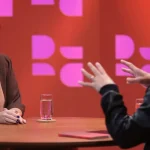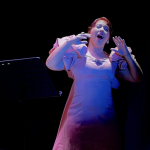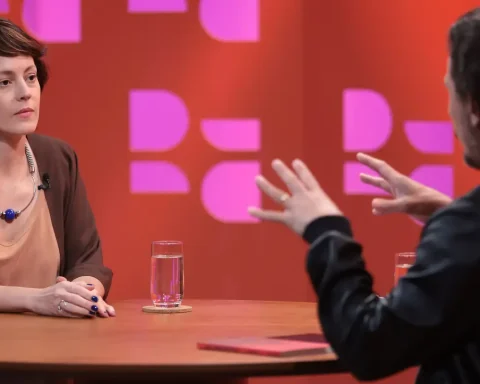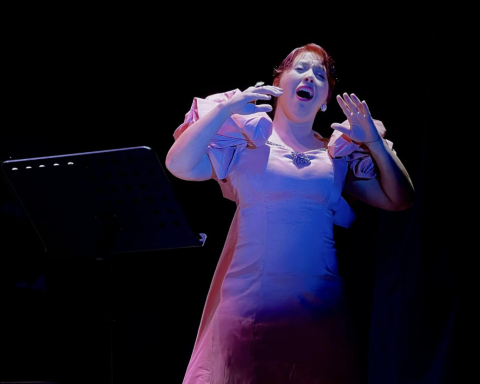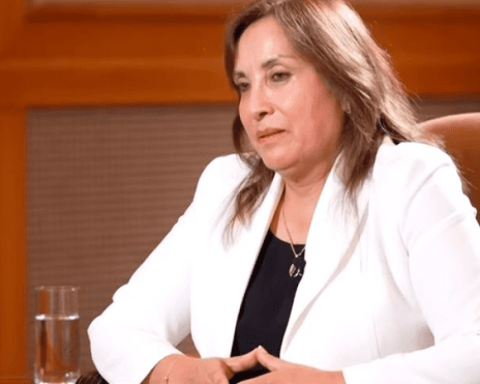Icon of an era, Elizabeth II, who died after 70 years of historic reign, was removed this Monday from her burning chapel for the “funeral of the century”, in the presence of leaders from around the world, before being buried privately in Windsor. From the American president Joe Biden to the Brazilian Jair Bolsonaro, from the kings of Spain -Felipe and Letizia, and the emeritus Juan Carlos and Sofía- to Emperor Naruhito of Japan, some 500 leaders and monarchs began to take their seats in Westminster Abbey to a ceremony turned into a security “challenge”, which put the streets of London (United Kingdom) under a strong police device.
Pope Francis, who did not attend, was represented by the Vatican Secretary for Relations with States, Paul Gallagher.
Giving a solemn start to the funeral, the coffin was removed by eight bearers from Westminster Hall, the oldest part of the British Parliament, where it had remained in the funeral chapel.
Mounted on a Royal Navy car, it had to be pulled by dozens of sailors to the imposing Gothic church located near the place that for five days saw hundreds of thousands of British parade, willing to stand in line for up to 24 hours to say goodbye to their Queen.
Chrissy Heerey, an active duty member of the British Air Force, was the last to pass. “When they told me: ‘You are the last person,’ I said: Really?” she explained, still in disbelief, to AFP.
On the eve of the state funeral, Buckingham Palace released a rare photo of Elizabeth II, taken for her “platinum jubilee” in June, showing the monarch dressed in pale blue and wearing a beaming smile.
Followed on foot by the new King Charles III and other members of the British royal family, the coffin was carried to the Abbey for a funeral that was announced as grandiose.
The queen “did not want long and boring services, there will be no boredom, but they will be transported to glory by hearing the service,” former York archbishop Lord Sentamu told the BBC.
The Dean of Westminster, David Hoyle, will lead the service and the Archbishop of Canterbury, Justin Welby, spiritual leader of the Anglican Church, will deliver the sermon.
Thousands of people in the streets
The oldest queen the United Kingdom has ever had died on September 8 at the age of 96, while spending the summer at her Scottish residence in Balmoral.
His health had not stopped deteriorating for a year, but the disappearance of a monarch whose presence seemed almost eternal shocked the country and the world.
The United Kingdom honored her with 10 days of national mourning, parades and processions, and massive popular emotion that made the protests of a minority of Republicans almost imperceptible.
Her eldest son, 73, succeeded her as Carlos III. Until now one of the least appreciated members of the British royal family, his popularity has risen in recent days.
Reunited with her parents and her husband
Symbol of an era of great changes, Elizabeth II came to the throne in 1952, in a United Kingdom still mired in the post-world war, and left in 2022 from the post-pandemic and Brexit.
He not only met 15 British Prime Ministers, from Winston Churchill to the current Liz Truss, but also historical figures such as the Soviet Nikita Khrushchev, Mother Teresa of Calcutta or the South African Nelson Mandela. Likewise, artists such as Charlie Chaplin, Michael Jackson or Lady Gaga.
At Windsor, the coffin will be carried to St George’s Chapel along the great avenue that runs through the castle grounds. In this 15th-century church, known for having been the scene of the last royal weddings, another religious service will be held with 800 guests, including employees of the late queen.
There, the symbols of the monarch – the crown, the orb and the sceptre – will be placed on the altar. The highest-ranking official of the royal house, the Lord Chamberlain, will break his “rule of command” and place it over the coffin, symbolizing the end of Elizabeth II’s reign.
Later, in a last private ceremony, reserved for the closest relatives, the queen will be buried in what is known as the “George VI Memorial”, an annex where her parents and the ashes of her sister Margarita already rest.
The remains of her husband, Prince Philip, will be buried next to her, moving them from the royal crypt, where they have been since his death in April 2021 at almost 100 years old.
With a capacity of around 2,200 people, Westminster Abbey could not accommodate the throngs of Britons eager to see their queen to the end.
Early in the morning, thousands of people were already waiting on the Mall, the famous avenue that leads to Buckingham Palace, some with British flags.
“We always said that if the queen died, we would come to her state funeral. We already came to weddings [reales]to the Jubilee [de Platino en junio]. We look forward to seeing the hearse,” said Liz, a 69-year-old woman who arrived with her friend Jane at 5:30 a.m.
After the hour-long religious service, a mount will move the coffin in procession through central London to Wellington Arch, at Hyde Park Corner, and from there, by hearse to Windsor Castle, about 40 km to the west, which will become the final resting place of the queen.
